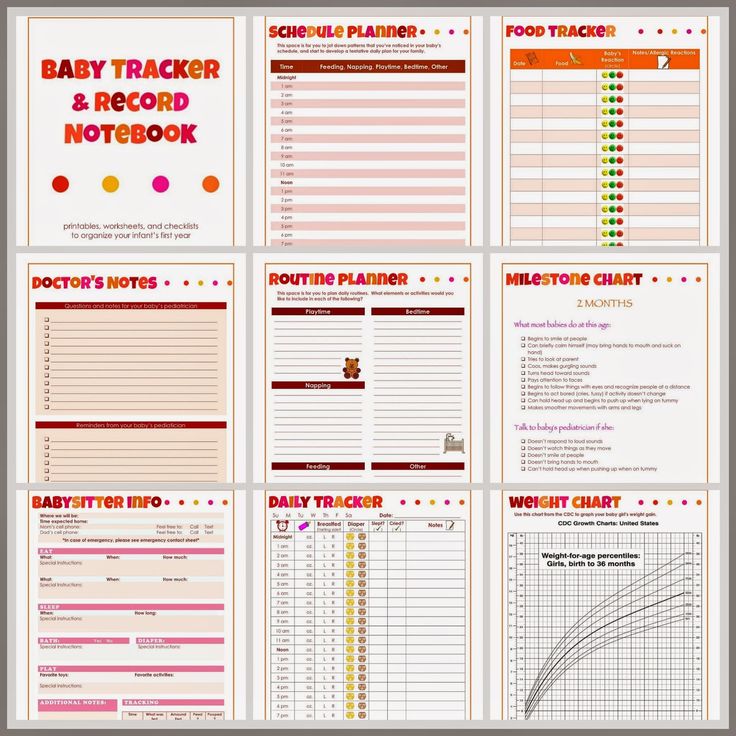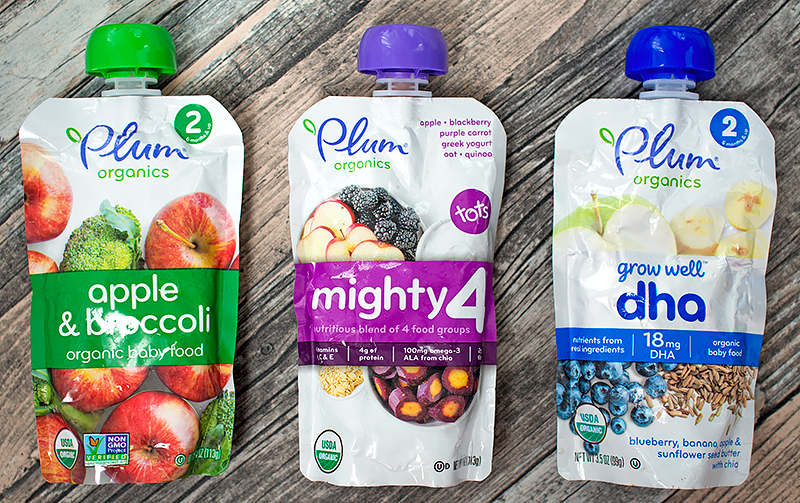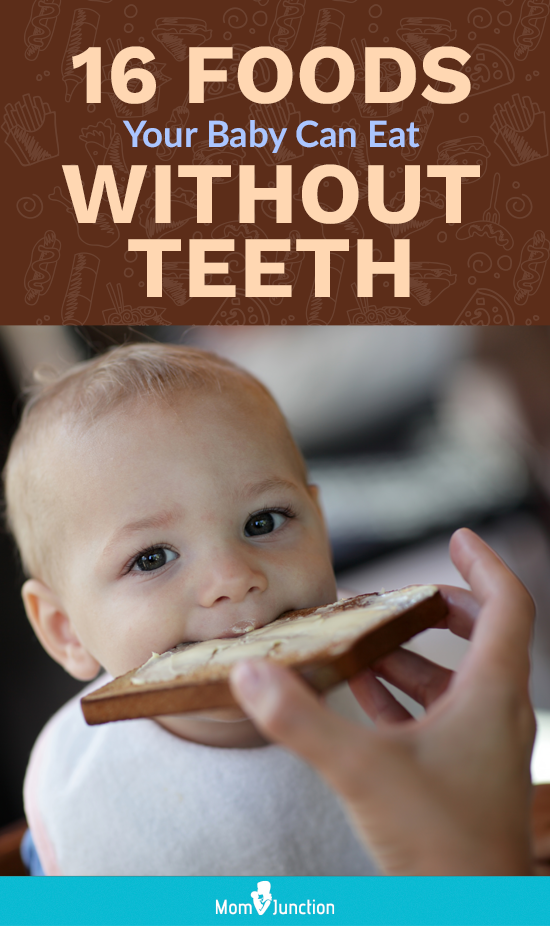Chart to keep track of baby feedings
A Newborn Feeding Chart That Works (With Printable!)
What's in this post...
Inside you’ll find all you need to know to put into a newborn feeding chart and then have a printable one for yourself! Whether or not you are interested in sleep training, this will get you started on a great solid routine.
I gave birth to my firstborn in a hospital in Aberdeenshire, Scotland.
With a midwife whom I’d never met.
It all happened so fast and no one thought I was actually near 10 cm because they hadn’t checked dilation since I wasn’t in much pain. Must not be close, they assumed.
But really I’m a redhead and my pain signals are all jacked up so then it was go time before we knew it.
“But I don’t even have the paperwork ready…” she said in a sort of sweet and confused voice.
“IT’LL WAIT!” I yelled.
Fast forward a few days…
Fast forward a few days and I was ready to start tracking my baby’s feeds. I couldn’t remember which side she had fed from or if she was feeding enough and I felt stressed.
I wanted to write it down and keep it in her nursery. So I used a pen and a little notepad and over the next few weeks kept diligent track to make sure things seemed okay.
They were!
Read: The ultimate newborn napping, feeding, and sleeping schedule
Newborn Feeding Chart
Use this simple printable chart to track your feeds to make sure baby is fed, your supply is up, and everyone is well.
Basic Feeding Tips For The Early Weeks
(Psst… you can scroll down and get your free downloadable newborn feeding chart).
Here are some basic rules of thumb when it comes to feeding newborns. Talk to your pediatrician or nursing consultant if you have any issues, but for most babies these principles will help you have a calm, contented baby.
Read: 8 reasons you’ve got a fussy whiny little one
Focus On Filling Baby Up
Newborns are sleepy.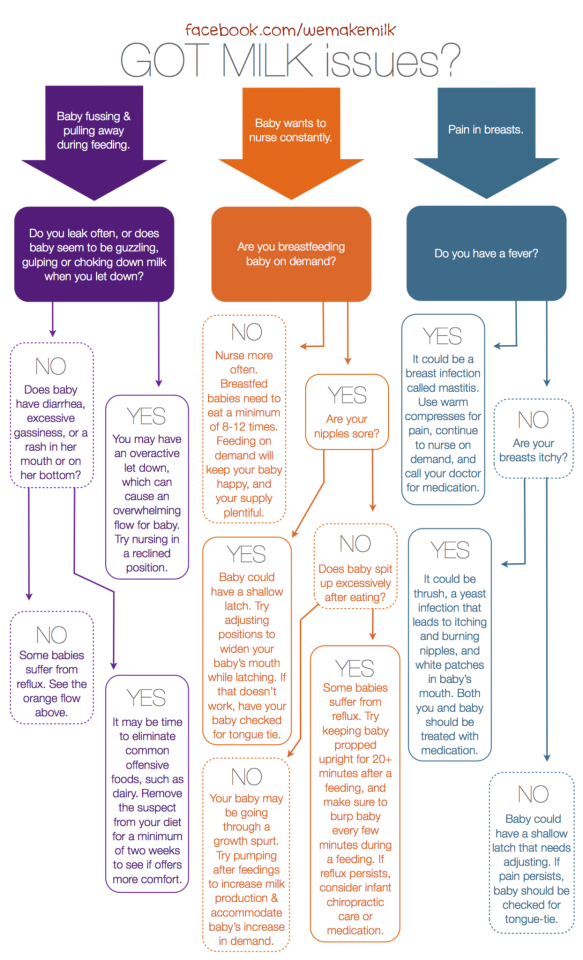 They want to feed a bit then nod off. This is not a good idea for a few reasons, listed below.
They want to feed a bit then nod off. This is not a good idea for a few reasons, listed below.
To keep track of whether or not your baby is taking full feeds, scroll down and get your free newborn feeding chart so you can keep track.
- Babies do not get the breast milk most rich in fat and calories (the hind milk) because if they nurse for a short period they’re only getting the fore milk (less density which means less filling).
- Also, they will not go into a deep sleep (which takes around 20 minutes) and then when they transition through sleep cycles (around 45 minutes or so after they’ve gone to sleep) they’ll wake up out of hunger.
- You will be feeding baby every hour all day long.
Related Reads:
- What To Do When Baby Is Feeding Every Hour (& Not Sleeping!)
- Feeding Baby Through One Year
Newborn Settling Guide
Tried-and-true *hands on* newborn settling strategies that even the most fussy (or wide-awake-sleep-refusing) newborns cannot resist!
Learn More
Feed Unswaddled By Day And Swaddled By Night
We want our babies to know the difference between night and day so they’ll have their wake times in the day and sleepy time at night.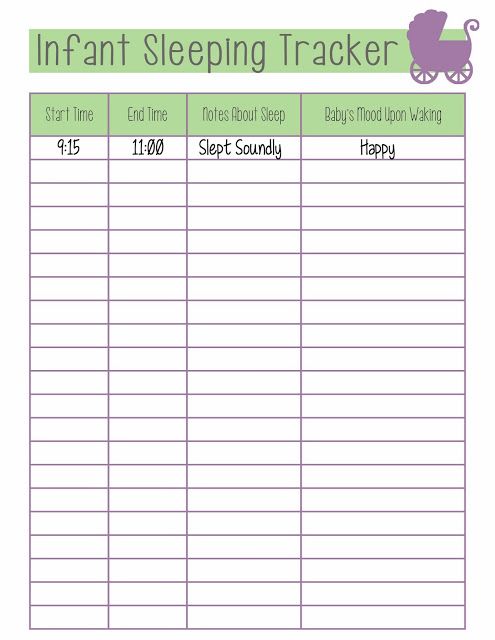
This means that we create certain associations with being awake and other associations with sleep. One of those is the swaddle. You should swaddle from Day One because this will decrease the likelihood your baby “fights the swaddle.”
I had 5 babies and none fought the swaddle because we did it from Day One and there simply wasn’t an option.
Babies who are not swaddled will wake frequently or nap lighter since the startle reflex (moro reflex) will cause their arms to rise up and “startle.”
If they aren’t in a deep sleep cycle this might be enough to wake them.
During the day unswaddle them to feed so you’re communicating wake time. At night, unswaddle the bottom of their swaddle (the swaddles perfect for this shown below) to change their diaper, then reswaddle them and feed swaddled. This means baby will essentially sleep through the feed. Voila!
Read: How to clear up daytime and nighttime confusion in babies
Bring Baby To You, Don’t Lean Towards Baby
Those midwives in Scotland had it going on. Not only did they give you all the logistics while you were in the hospital, they visited you for a few weeks AT HOME during the postpartum period.
Not only did they give you all the logistics while you were in the hospital, they visited you for a few weeks AT HOME during the postpartum period.
You could ask them absolutely anything about anything and they helped make it all work. One thing they gave me in my welcome packet was a DVD on how to get baby to latch properly.
With 5 babies I have had 0 issues with latching on and I’m telling you this works.
Instead of leaning down onto baby, position the breast and the baby’s head so that you push the baby onto your breast.
This means your bringing baby where the milk is, not trying to bring the milk down to baby. And, it means this will make for a better latch.
Related Reads:
- The Difference Between Midwives And Doctors
- How To Get Your Newborn To Sleep Well From Day One
Newborn Feeding Chart
Use this simple printable chart to track your feeds to make sure baby is fed, your supply is up, and everyone is well.
Example Daily Rhythm
Newborns have tiny tummies. You’ll be feeding baby around the clock for weeks at a time. However, by giving full feeds and keeping baby awake during feeds (which can be a feat) you’ll be able to increase the time between feeds providing baby with more restorative naps.
Initially you want to aim for feeding baby every 2.5 to 3 hours. So you may feed at 6 am, 8:30 am, 11:00 am, then 2:00 p.m.
The only reasons baby should feed less than 2.5 hours apart are these:
- Baby is not feeding enough at each feed (not getting calorie rich hind milk or enough ounces of formula)
- They are going through a growth spurt.
- You are cluster feeding in late afternoon early evening on purpose.
Read: The Easy Peasy Newborn Routine That Makes For Happy Babies
A Printable Chart That Works Like A Charm
I’ve created a newborn feeding chart below where you can record what times your baby is feeding and use that to find a good rhythm for you and your baby.
Read: The Dreamfeed: The Why, The How, & When To Stop
Is baby sleeping okay?
Baby bedtime can begin to feel like an actual nightmare.
Moms just want baby to sleep well. You just want to have some peace and quiet after a long day of momming and yet you are spending so much time trying to comfort an exhausted baby and wondering where it all went to pot.
Because moms with babies are busy (and tired) I created a set of nitty gritty baby sleep checklists that get straight to the point.
- Things to look for if your baby is sick.
- Habits to check if your baby won’t sleep at night.
- What to do if your baby won’t go back to sleep at night.
- And so much more!
It’s not usually some major problem that’s causing baby sleep issues, it’s usually something small. Use these checklists and get some clarity today.
Read: Cocooning a Newborn & 7 Reasons Why it Can Be Good For The Family
Newborn Feeding Chart
Use this simple printable chart to track your feeds to make sure baby is fed, your supply is up, and everyone is well.
Sources:
- The importance of schedules and routines
- Routines minimize chaos which promotes resilience and regulation
- Routines indicators of predictable family life contributing to childhood development
Family Routines Reboot
Take our 3 day challenge to create life-giving family, child, and self-care routines.
Learn More
::
Newborn and Baby Feeding Chart in the 1st Year
Whether you’re a first-time parent or a seasoned caregiver, figuring out why your baby is crying can feel like a guessing game. Fortunately, paying attention to your baby’s daily feeding schedule can help reduce some of the guesswork.
By following a feeding schedule, you might be able to avoid some of the fussiness associated with hunger, and you’ll be able to more easily tell whether he’s more likely to be wet or tired instead.
Whether your little one’s a newborn, a 6-month old, or even a 1-year-old, read on to find out how to come up with a feeding schedule and adjust it to your baby’s needs as he grows and develops.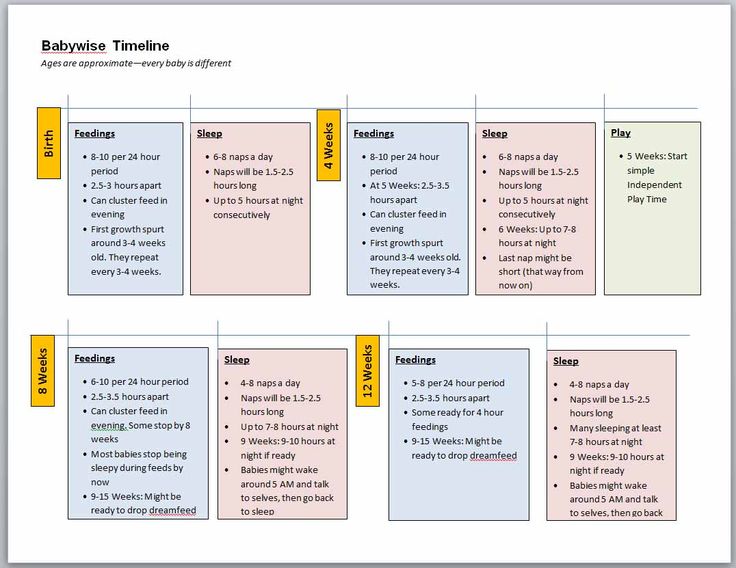
Baby Feeding Chart at a Glance
As you watch for those delightful baby milestones — from first smiles and giggles to sitting and crawling — it can be hard to keep track of everything related to your baby’s feeding schedule. Fortunately, you don’t have to. We've assembled all the necessary details in the chart below, including feeding frequency and portion information.
Feeding Schedule for Breastfed Newborns
From the moment your baby is born, she begins to grow at a surprisingly quick pace. To fuel her development and keep her well fed, be prepared to nurse about every two to three hours.
By the time she’s a week old, your little one may begin to nap for longer periods, giving you more time between feedings. If she’s sleeping, you can maintain your baby’s feeding schedule by waking her up gently when it’s time to feed.
Tips to keep in in mind if you’re breastfeeding:
The length of time between feedings is measured from when your baby begins nursing, not when she stops.
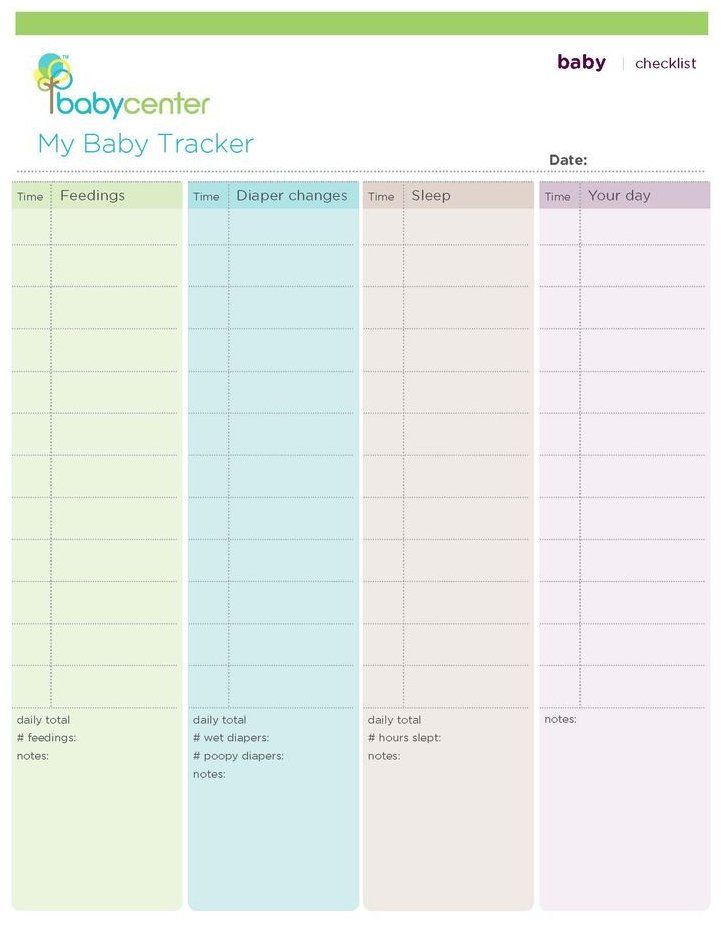
Ensure your little one latches on properly. This can be difficult when you’re starting out, especially for first-time moms, but over time your baby may begin to latch comfortably. Speaking to a lactation consultant could be helpful.
As your baby grows she may nurse at a faster rate.
Alternate between breasts during each feeding.
Look for signs that your baby is full. She may turn away from the breast, nurse at a slower rate, or lose interest. Once she seems full, end the feeding
Your baby’s healthcare provider may recommend adding vitamin D oral supplements to your baby’s diet. Follow the provider's instructions to ensure your baby gets the proper dosage.
Nursing your baby on demand or every couple of hours around the clock can seem like a lot—and it is! At the newborn stage, your baby can’t take in much milk in a single sitting, so frequent feeding is needed to make sure she's getting enough. Later on, as your baby's daily routine (including her sleep and awake time) becomes more predictable, you'll have an easier time following a regular feeding schedule.
Feeding Schedule for Formula-Fed Newborns
Formula-fed newborns will need about two to three ounces (60 – 90 milliliters) of formula per feeding to start with. Newborns, fed from bottles are able to take in more during a feeding than a breastfed infants. This allows you to space out feedings by about three to four hours.
As your baby reaches her 1-month milestone, she will need at least four ounces per feeding to get the nourishment she requires. Your newborn’s feeding schedule will gradually become more predictable over time, and you’ll need to adjust the amount of formula as she grows.
3-Month-Old Feeding Schedule
Now that you and your baby have begun to develop a routine, it can be difficult to make slight alternations. However, as your baby grows and her feeding needs change, you’ll need to adjust your baby’s feeding schedule accordingly.
For Your Breastfed Baby
At 3 months, your baby is becoming more active, will begin to breastfeed less often, and may sleep for longer periods of time at night.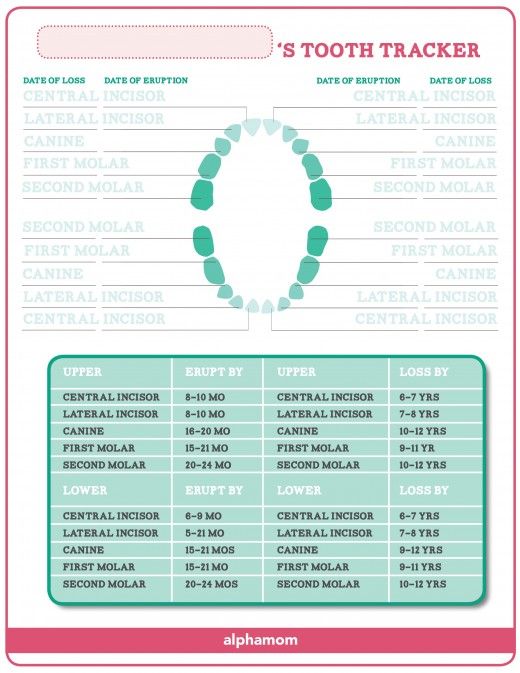
You may have to nurse just six to eight times per day at this stage (or about every three to four hours).
If your baby’s healthcare provider sees that he’s gaining weight and growing at a regular pace, then he’s probably getting the right amount of nutrition.
The number of wet and soiled diapers is also a great indicator as to whether or not he is eating well. Your baby should have about four to six wet diapers a day.
See your baby’s healthcare provider if you’re concerned that your little one may not be getting enough to eat.
For Your Formula-Fed Baby
As your little one continues to grow, you’ll notice that he wants to eat more during each feeding and begins to sleep for longer intervals at night.
Slight adjustments to your 3-month old’s feeding schedule may include:
Increasing the amount of formula to about 5 ounces per feeding
Giving your baby formula about six to eight times per day
Switching the newborn nipple size or style on your baby’s bottles to make it easier for him to drink from the bottle.
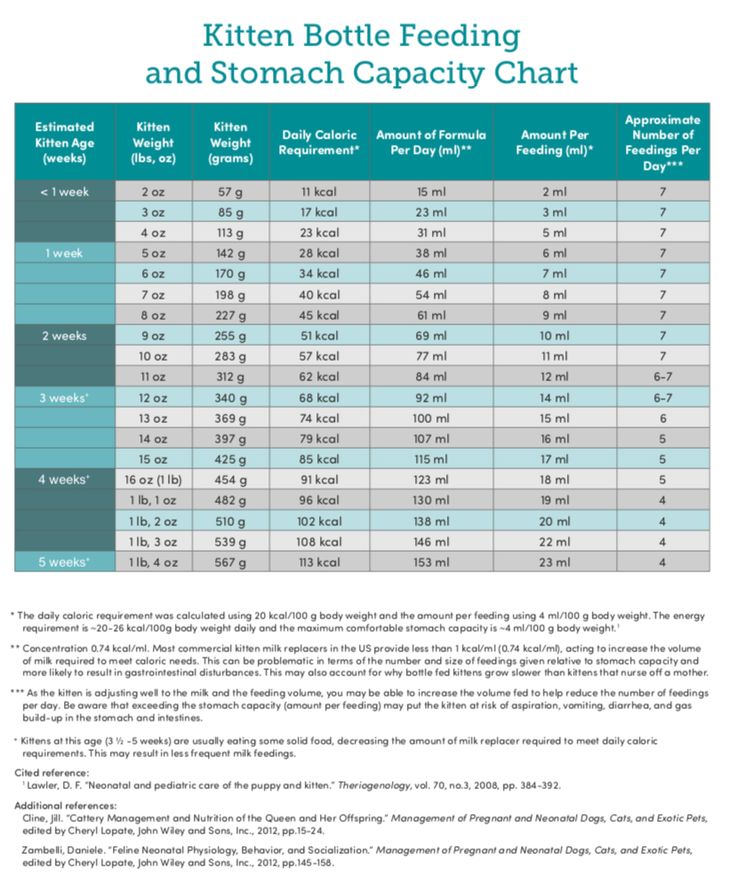
6-Month-Old Feeding Schedule
At this stage, your baby’s healthcare provider may recommend you expand your baby’s diet to include solid foods. With these menu additions on the horizon, having a 6-month-old feeding schedule will come in handy!
When a baby ready to try solid foods, a single grain baby cereal mixed with breast milk or formula has traditionally been the first solid food to be introduced, followed by pureed vegetables and fruits. However, there's no medical evidence that indicates introducing foods in any special order offers any benefits.
Keep in mind that solids are only a supplement at this stage, and that breast milk or formula is still your baby’s most important source of nutrition. Continue to include about 32 ounces of breast milk or formula in your 6-month-old’s feeding schedule of three to five feedings per day to ensure your baby gets the necessary vitamins and minerals.
You may be able to start weaning your baby off of night feedings; however, every baby is unique. Speak to your baby’s healthcare provider to see if it’s time to cut down on nighttime feedings and to learn what you can do to encourage the process.
Speak to your baby’s healthcare provider to see if it’s time to cut down on nighttime feedings and to learn what you can do to encourage the process.
7 to 9-Month-Old Feeding Schedule
Months seven through nine can be a good time to add a greater variety and quantity of solid foods to your baby’s diet. He may need fewer daytime feedings, now — about four to five.
Purees of meats, veggies, and fruits are recommended at this stage. Introduce your baby to these new flavors as single ingredient purees then gradually add combinations to his meals.
Your baby may slowly begin to wean off breast milk or formula as his growing body demands solid foods for nutrition.
There is no correct time to wean off breast milk or formula. Speak to your baby’s healthcare provider to learn more about the cues and signs that can let you know when your baby is ready for more solid foods.
10 to 12-Month-Old Feeding Schedule
Exploring new textures may now be a big part of your little one’s meals. As he grows, he may begin to self-feed with finger foods such as cut-up bananas, dry cereal, and pasta and even demand certain flavors that he enjoys more.
As he grows, he may begin to self-feed with finger foods such as cut-up bananas, dry cereal, and pasta and even demand certain flavors that he enjoys more.
As you continue to replace breast milk or formula with solids, your baby’s healthcare provider can help determine how to balance out your baby’s meals.
Blends of different foods can be introduced during mealtime and added to your baby’s feeding schedule. Your baby may eat about three to four times per day. Be sure to avoid offering foods that pose choking hazards such as grapes, peanuts, and popcorn.
Finger feeding can be fun for your little one. Always be sure that his food is cut up into pieces that are small enough for him to be able to pick up and chew without being at risk of choking. After some practice, he’ll be on his way toward wholesome, independent eating habits.
1-Year-Old Feeding Schedule
Now that you’re celebrating your baby’s first birthday, it’s also time to celebrate his feeding accomplishments. Your baby’s feeding schedule can now include almost all the healthy and nutritious foods you eat, with a few minor exceptions such as raw honey and choking hazards like nuts.
Your baby’s feeding schedule can now include almost all the healthy and nutritious foods you eat, with a few minor exceptions such as raw honey and choking hazards like nuts.
Your baby may be eating less frequently now, as he is able to take in more food in one sitting. Give your 1-year-old approximately three meals and about two or three snacks a day.
This is the time to add cow’s milk to your baby’s diet. However, too much milk is not always good, and should be kept to about 16 to 24 ounces per day if your baby is able to tolerate lactose. Check with your baby's healthcare provider if you have any questions about how and when to introduce cow's milk.
You can continue to nurse your baby if you wish. There is no correct time to wean him off of breast milk; rather, it is recommended that to continue breastfeeding for as long as it is right for you and your little one. Consult with your baby’s healthcare provider if you have questions about the weaning process.
As your baby grows and develops, his feeding needs will change. Having a baby feeding schedule at the ready can help you track your baby’s mealtimes and anticipate when he’ll start to be hungry.
Having a baby feeding schedule at the ready can help you track your baby’s mealtimes and anticipate when he’ll start to be hungry.
This is just one of the ways you can help keep your little one happy and developing well. Having a feeding schedule in place also gives you some extra freedom to spend more time enjoying his many milestones.
Of course, if at any time you have questions or concerns, reach out to your baby’s healthcare provider for personalized guidance and advice.
Child's sleep - BabySleep Center for Children's Sleep and Development
From birth to 1.5 years old, a child experiences 10 crises of growth and development. Do not be afraid, each crisis is a jump in the development of the nervous system, the growth of the brain, the emergence of new abilities in a child.
Enter the date of birth of the child and get a personal table of developmental leaps
Was the baby born out of time?
Click on the zip to learn more
Clear
1
Week
16
Week
17
Week
18
Week
19,0003
Week
Week
21
Week
22 9000 9000 9000 23 9000 23 9000 23 9000 23 9000 23 9000 23 9000 23 9000 23 9000 23 9000 23 9000 23 9000 23 9000 23 9000 23 9000 23 9000 23 9000 23 9000 23 9000 23 9000 23 9000 23 9000 23 9000 23 9000 9000 23 9000 23 9000 23 9000 23AR Week
24
Week
25
Week
26
Week
27
Week
28
Week
29
Week
30
Week
31
Week
32
Week
33
Week
34
Week
9000 35Week
9000 36 9000 9000 9000 9000 9000 9000 9000 9000 9000 9000 9000 9000 9000 9000 9000 37Week
38
Week
39
Week
40
Week
41
Week
9000 42 9000 9000 9000 9000 9000002 Week
43
Week
44
Week
45
Week
46
Week
47
Week
48
Week
49
Week
9000 9000 9000 9000 9000 9000 9000 9000 9000 9000 9000 9000 9000 9000 9000 9000 9000 9000 9000 9000 9000 9000 9000 9000 9000 9000 9000 9000 9000 9000 9000 9000 9000 9000 9000 9000 9000 9000 9000 9000 9000 9000 951
Week
52
Week
53
Week
54
Week
55
Week
56
Week
57
Week
58
Week
59
Week
60
Week
61
Week
62
Week
63 9000
Week
65
Week
66
Week
67
Week
68
Week
69
Week
70
Week
71
Week
72
Week
73
Week
74
Week
75
Week
76 9000 9000 9000 9000 9000 9000 9000 9000 9000 9000 9000 9000 9000 9000 9000 9000 9000 9000 9000 9000 9000 77 9000 9000 77 9000 9000 9000 77 9000 77 9000 77 9000 77 9000 77 78
week
A difficult time is expected around this week
Now is a relatively quiet time
Possibly a difficult time
Life hack from BabySleep
When the table of jumps and crises of the child is in sight, it is easier for the family to survive them!
Print PDF
When
Curses of the child are
5 week / 1 month
1 leap: new sensations
8 week (8–9) / 2 months
2 GENERAL: PACES
9000 12 week / 2 ,5 months3 leap: awareness of change
19 weeks (15–19) / 4 months
4 leap: exploration of space
26 weeks (23–26) / 5.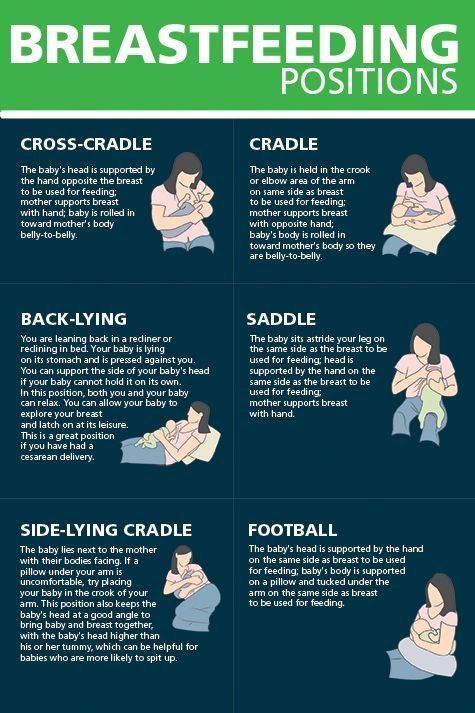 5 months
5 months
5 leap: distance awareness
37 weeks (34–37) / 8–9 months
6 leap: understanding categories
46 weeks (42–46) ) / 10.5 months
7 leap: design and sequence
55 weeks (51–54) / 1 year
8 leap: planning and goals
64 (60–64) / 1 year and 2 months
Leap 9: abstractions and principles
75 weeks (71–75) / 1 year and 5 months
10 jump: systems and management
Frequently asked questions
How to use the calendar if the baby was born early or late?
Where did the crisis data come from?
The child sleeps very badly during the crisis weeks, what should I do?
If some jumps go unnoticed?
If the crisis weeks in the table and in life do not coincide?
If the child seems to be in crisis all the time?
Why does the number of the crisis week in the calendar not always coincide with the number of the leap week?
Elena Muradova
Founder of BabySleep, first sleep consultant in Russia and CIS
800+ reviews
See all
Consultation with an escort
Problem
Falls asleep only with long motion sickness in the bassinet, 8–12 awakenings per night
Result
GV)
Watch video review
Assisted consultation
Problem
The lion wakes up 5-20 times a night, cries, asks for a bottle, shakes, scolds
Result
Sleep all night without waking up and without feeding
See response
Express consultation Problem
Active weather exhaustingly long (1-2 hours) fall asleep at night, mother is tired
Result
Falling asleep in 15 minutes, mother feels contact and unity with children
See review
Consultation with an accompaniment of
Problem
Crying and screaming at night, wakes up every hour and asks for a nipple
Result
Soft weaning from the nipple, independent falling asleep and sleep without tears
watch video review
Consultation with accompaniment of
Problem
Twins fall asleep during feeding (GW), often wake up at night, sometimes wake each other up; mother feeds everyone all night, sometimes not having time to lie down; in a family of 6 children (2 pairs of twins)
Result
Taught to sleep in cribs without a breast, reduced night feedings to 2; built a bedding system for 5 small children in the house
See review
Consultation with accompaniment
Problem
The child sleeps only short sleeps of 30-40 minutes, falls asleep in his mother's arms with rocking, after falling asleep for a night sleep wakes up after 30- 40 minutes
Result
The child sleeps all night, waking up once for feeding, falls asleep on his own in the crib; first and second daytime naps over 9 hours0003
See review
Consultation with an escort
Problem
Long naps with resistance and tears, short naps, waking up with intense crying, getting up early at 5-6 am sleeps peacefully in his room all night without awakening, falls asleep in 5 minutes without protest; the child is in a great mood during the day
See review
Assisted consultation
Problem
Frequent nocturnal awakenings, long naps, nocturnal screaming, no appropriate routine
Outcome
Predictable routine according to age, night awakenings reduced; mother began to feel the baby better, relax faster; the child began to fall asleep in his crib within 5 minutes
Watch the video review
Consultation with an accompanist
Problem
Frequent nocturnal awakenings
Outcome
Falling asleep, sleep in the first half of the night, then sleep in the morning; gone from co-sleeping, frequent nighttime awakenings while maintaining breastfeeding, passed the “dumping” of daytime sleep
See review
Consultation with escort
Problem
Falls asleep for a long time, with motion sickness and tears; no predictable rhythm of the day, short dreams (30-40 minutes)
Result
Falling asleep without tears and tantrums in 5-10 minutes, comfortable rhythm of the day, mother's confidence
Watch video review
Consultation with
Problem
Frequent awakening, Hand sleep, short daily dreams
Result
Independent falling asleep at night, reduction of awakening at night, kids sleeps in their crib
Watch the video review
Assisted consultation
Problem
Falls asleep rocking in arms, rocking at night lasts up to 40 minutes. Dad "evicted" to sofa
Dad "evicted" to sofa
Result
Falls asleep on her own in a separate bed in 5-10 minutes
Watch video review
Consultation with accompaniment
Problem
Ran at night from one child to another. There were a lot of questions about organizing the sleep of the youngest daughter
Result
My daughter began to sleep better, her sleep became predictable.
Watch video review
Assisted consultation
Problem
Suffered from constant nighttime awakenings
Result
Corrected the regime. On the advice of a consultant, they waited a bit, and after a few months the baby began to fall asleep on his own
Watch a video review
Consultation with accompaniment
Problem
Wakes up at 4 in the morning and needs a breast, does not fall asleep on his own
Result
The child falls asleep without the help of his mother breasts
Watch video review
Subscribe!
Free consultations and tips in our social networks
How much should a newborn eat: feeding chart
0-6 months
Article
5/5 2 reviews
As soon as the long-awaited event has happened and the baby is born, the mother is faced with many questions. One of the most frequently asked: how to feed and how much should a newborn eat? Indeed, this is a very important point, since a properly selected and debugged diet allows the child to grow and develop harmoniously, promotes good health and strengthens the immune system. How to calculate the norm for a baby from the first days of life to a year?
One of the most frequently asked: how to feed and how much should a newborn eat? Indeed, this is a very important point, since a properly selected and debugged diet allows the child to grow and develop harmoniously, promotes good health and strengthens the immune system. How to calculate the norm for a baby from the first days of life to a year?
8 min. for reading Feb. 17, 2022
Contents
Listen to the experts
Calculation rates
- The first weeks of life
- One to four months
- Five-six months
- Seven to twelve months
How much breast milk a newborn should eat: table
Not enough breast milk or not at all: what to do
Norms and stages of the introduction of complementary foods
- First stage - vegetables
- Second stage - cereals
- Third stage - fruits
- Fourth stage - meat
- Fifth stage - new flavors
An example of a daily diet for a 6-8 month old baby
Frequently asked questions
Listen to the experts baby's age.
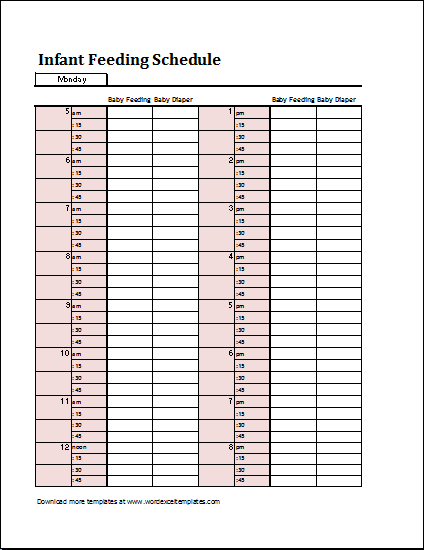 All these data are usually voiced to parents during a doctor's appointment and entered into the card for further assessment of the child's condition. Comparison of the actual weight and the prescribed norms allows you to find out whether the child is eating well enough and, if necessary, to correct mistakes made during feeding. If something is not clear to you at the appointment with the pediatrician, do not be afraid to ask again and clarify. After all, only a specialist can give competent recommendations specifically for your baby, based on the results of an examination or analysis. The advice of friends, grandmothers and mothers from various forums may be good, but they do not take into account the individual characteristics and needs of your child's body. So, they may not work or even hurt.
All these data are usually voiced to parents during a doctor's appointment and entered into the card for further assessment of the child's condition. Comparison of the actual weight and the prescribed norms allows you to find out whether the child is eating well enough and, if necessary, to correct mistakes made during feeding. If something is not clear to you at the appointment with the pediatrician, do not be afraid to ask again and clarify. After all, only a specialist can give competent recommendations specifically for your baby, based on the results of an examination or analysis. The advice of friends, grandmothers and mothers from various forums may be good, but they do not take into account the individual characteristics and needs of your child's body. So, they may not work or even hurt. Be part of Nestle Baby&Me®
Each stage of a baby's development is unique and is associated with new questions from parents. Get advice from experts.
Registration
Calculation norms
1.
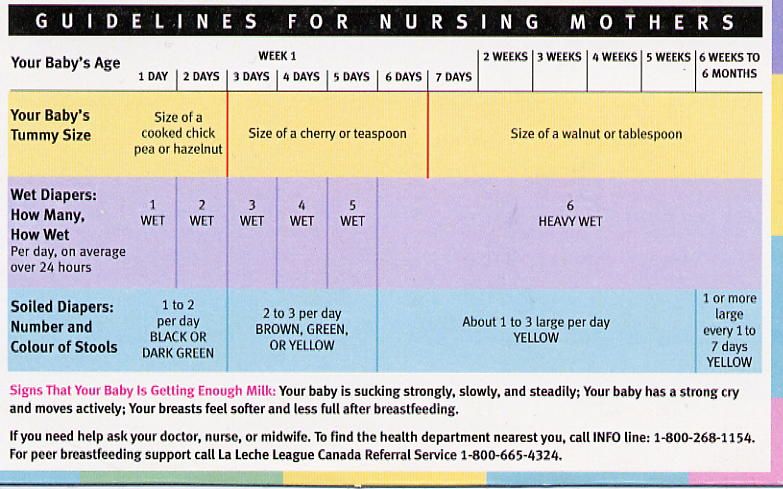 The first month of life
The first month of life As soon as the baby is born, it is immediately brought to the mother's breast to feed. This helps to strengthen the immunity of the baby and stimulates lactation in the mother. During this period, there is still no milk in the breast, but there is a very nutritious transparent sweetish liquid - colostrum. It is released in the first two or three days after birth and supplies the child with all the necessary substances. To eat, the baby needs a few drops: on the first day of life, the small stomach holds only 7 milliliters. On the second day of life, the baby begins to eat more often. It needs to be fed on demand or every two to three hours, while the baby eats within 10-20 milliliters at one time. Thus, per day the norm will be approximately 90 milliliters. Starting from the third day after birth, the mother actively produces breast milk, the volume of which increases as the child grows. In the first week of life, the baby should eat from 50 to 80 milliliters of milk at a time, and 400 milliliters per day.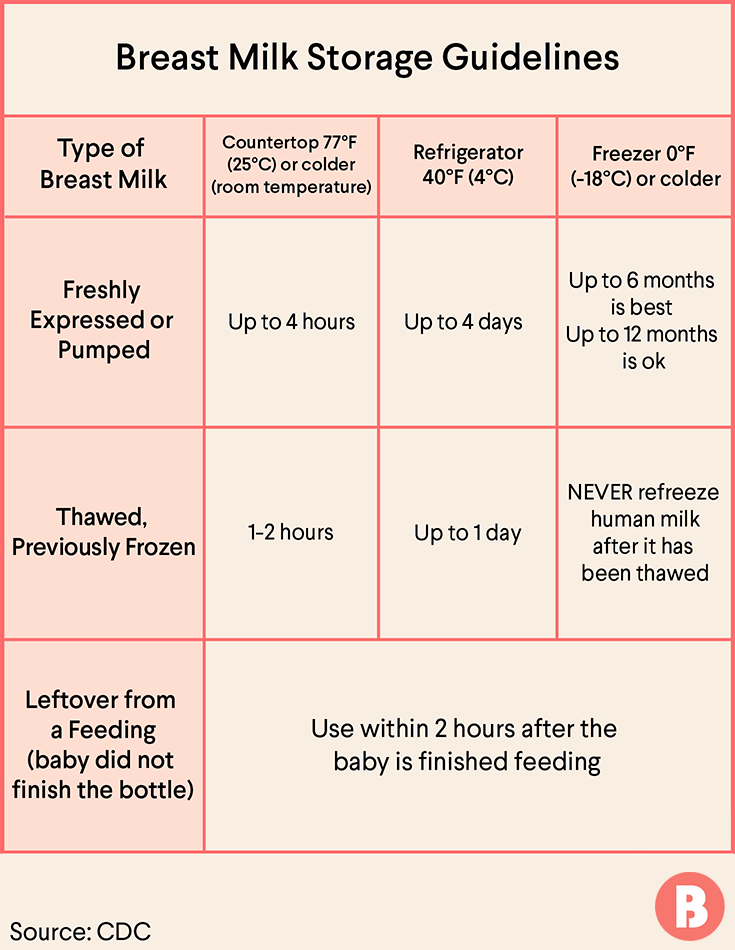 At two weeks of age, the daily ration should be 20% of the weight of the newborn, and closer to a month - about 600 milliliters. It is important to note that these figures are approximate. Each baby needs its own, certain amount of milk or mixture, depending on individual characteristics: height, weight, mother's milk quality, calorie content of the mixture and the rate of development of the baby.
At two weeks of age, the daily ration should be 20% of the weight of the newborn, and closer to a month - about 600 milliliters. It is important to note that these figures are approximate. Each baby needs its own, certain amount of milk or mixture, depending on individual characteristics: height, weight, mother's milk quality, calorie content of the mixture and the rate of development of the baby.
See also: Breastfeeding: the first steps after childbirth
2. From one to four months
Every day the baby grows, gains weight and increases its daily portions of milk. Having reached the month, the baby is already eating 90-100 milliliters six to seven times a day. After one month, the norms become as follows:
- At two months, the child should eat from 120 to 150 milliliters at a time. The daily norm, therefore, is 700-800 milliliters.
- A three-month-old baby should eat between 150 and 180 milliliters. In this case, it is recommended to observe the frequency of feeding no more than six to seven times a day.
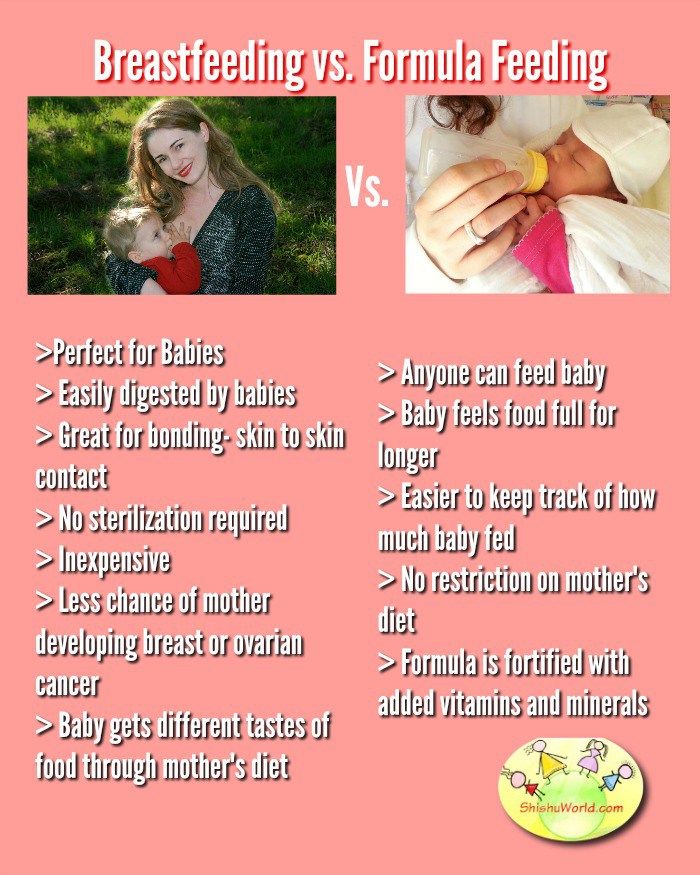
- From the fourth month, babies need 180-210 milliliters of milk or infant formula. The average amount per day is not less than 1/6 of the baby's weight.
3.Five-six months
A six-month-old child normally eats 210-240 milliliters at a time, and the total amount of food per day should be 1/7 of body weight, or 800-1000 milliliters. Also, if there are no contraindications, complementary foods are introduced from six months.
4. From seven to twelve months
During this period, a single portion of breast milk for a baby ranges from 210 to 240 milliliters. At the same time, the average amount per day is not less than 1/8 of the child's body weight. Vegetable, fruit and meat purees, dairy-free and milk porridges are introduced into the diet (if the baby is not allergic to cow's milk proteins).
Below is a table that describes in detail the daily intake of a newborn for each age up to a year.
How much breast milk should a newborn eat: table
| Child's age | The amount of milk eaten per feeding, ml | The amount of milk eaten per day, ml |
| 3-4 days | 20-60 | 200-300 |
| 1 week | 50–80 | 400 |
| 2 weeks | 60–90 | 1/5 weight of child |
| 1 month | 100–110 | 600 |
| 2 months | 120-150 | 800 |
| 3 months | 150-180 | 1/6 child weight |
| 4 months | 180-210 | 1/6 child weight |
| 5-6 months | 210–240 | 1/7 baby weight (800-1000) |
| 7-12 months | 210–240 | 1/8 weight baby |
Important!
Remember that every child is unique, has individual characteristics and needs.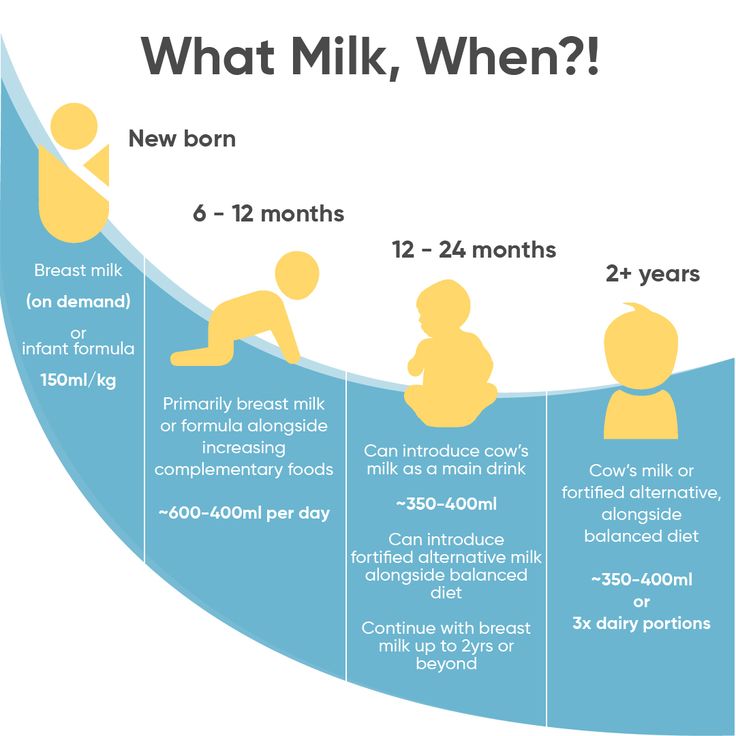 Therefore, slight deviations from the standard indicators are quite possible.
Therefore, slight deviations from the standard indicators are quite possible.
Not enough breast milk or not at all: what to do
When a baby cries after waking up, he is hungry. Modern doctors do not advise mothers to maintain any strict feeding schedule. If the mother gives the baby a breast when he asks, and the baby eats for her own pleasure and at the same time sleeps soundly and well, smiles and is not naughty, then she is full and completely satisfied.
But if the baby cries and sleeps badly, then perhaps he does not have enough milk. In this case, check if the baby is eating his age norm, and try to keep track of this indicator in the future. Found that you don't have enough breast milk? Do not worry, it is better to immediately consult a doctor. The specialist will help you find a way to support milk production and improve lactation.
If you cannot solve the problem and normalize lactation, consult a pediatrician and find the right supplemental formula for your child.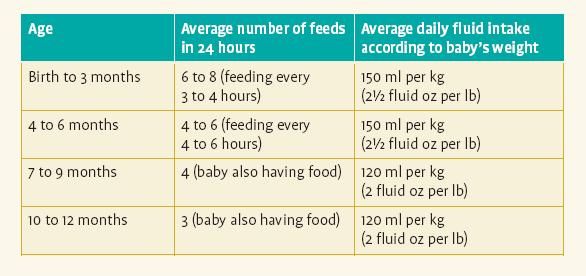 With strict observance of all the doctor's recommendations, instructions for preparation and dosages indicated on the package, the mixture makes it possible to compensate for the lack of breast milk and provide the baby with the necessary amount of nutrients.
With strict observance of all the doctor's recommendations, instructions for preparation and dosages indicated on the package, the mixture makes it possible to compensate for the lack of breast milk and provide the baby with the necessary amount of nutrients.
Important!
Even if you don't have enough breast milk to fully meet your baby's needs, try to remain on partial breastfeeding for as long as possible. After all, the ideal food for a child is mother's milk.
Norms and stages of introduction of complementary foods
As a rule, complementary foods are introduced at the age of six months. Before you start exploring new products, you should consult with your pediatrician. In general, different types of food are introduced in stages, starting with very small portions.
1.First step - vegetables
According to the World Health Organization, the best starter is a one-component vegetable puree, such as zucchini, broccoli, cauliflower or potatoes. If everything goes well, you can try pumpkin, carrot, pea and tomato puree a little later.
It takes seven to ten days to fully introduce the product into the baby's diet. We start with half or a whole teaspoon once a day until breastfeeding. If there are no allergic or other adverse reactions, you can continue the introduction of this product, gradually increasing the dose to a full serving - 100-150 grams.
2. The second stage - cereals
After the introduction of vegetable puree, we recommend diversifying the baby's menu with cereals. For acquaintance, it is better to choose liquid one-component gluten-free cereals, for example, rice or buckwheat. Then you can add oatmeal or semolina.
The initial portion of porridge is half or one teaspoon. Gradually increase the portion to a full - 150 grams.
3.Third stage — fruit
We also start complementary foods with one-component low-allergenic purees, such as apple, pear, plum, banana. These products are not only tasty, but also contain vitamins and minerals necessary for the child.
Fruit purees are also introduced with caution, starting with half or a whole teaspoon. Gradually, the portion increases to 100-150 grams.
Find out more: Gerber Baby Food: Puree Range
4.Stage Four - Meat
Meat is an essential product for development, rich in iron and protein, which is well absorbed in the body. It is introduced in the form of a homogeneous one-component puree from dietary turkey, rabbit, chicken, veal or lamb.
At the beginning we give a try - half or one teaspoon, over time we bring the portion to 60 grams.
5. The fifth stage - new tastes
After the successful introduction of the above products, the baby forms a full-fledged varied menu. So you can introduce the young gourmet to new flavors that could previously provoke an allergy: multi-component purees, fruit and cereal cocktails, children's snacks, pieces of fresh fruits and vegetables.
See also: Introduction of complementary foods to children with food allergies
Example of a daily diet for a baby at 6-8 months
A child from six to eight months should be given complementary foods three times a day. Further, at the age of nine to eleven months, the amount is increased to four times a day. To make it easier and clearer, check out two options for a full-fledged daily diet, which outlines what and how much a newborn should eat.
Further, at the age of nine to eleven months, the amount is increased to four times a day. To make it easier and clearer, check out two options for a full-fledged daily diet, which outlines what and how much a newborn should eat.
See also: Nutrition for a 7-month-old baby: making a menu for a baby
Popular questions
1. How to warm up breast milk?
Use the bottle warmer to warm breast milk that has been stored in the refrigerator. If this is not at hand, put a tightly closed bottle in a container of warm water and hold it there until the milk warms to body temperature - 37 ° C.
2. How often should a newborn eat?
A newborn needs to be fed every 2-3 hours, ie 10-12 times a day.
3. How much milk does a newborn eat?
During the first days of life, the baby has a very small stomach and a poorly developed sucking reflex. Therefore, for one feeding, the newborn eats 7-9 milliliters of colostrum. Breast milk from the mother appears only on the third or fourth day.
Breast milk from the mother appears only on the third or fourth day.
4. How to calculate how much a child should eat?
To understand how much a newborn should eat, you need to know his age and weight. Data for calculation: from 10 days to 1.5 months, the baby needs such an amount of food, the weight of which is approximately 1/5 of the child's body weight; from 1.5 to 4 months - 1/6, from 4 to 6 months - 1/7; from 6 to 8 months - 1/8; from 8 to 12 months - 1/9 of the body weight.
Articles on the topic:
Breastfeeding: benefits for the baby, health for the mother 12 rules of healthy nutrition for children Baby does not eat well, how to feed?
Latest reviews
Average customer rating
2 customer ratings
Snapshot of community ratings
- 5 2
- four 0
- 3 0
- 2 0
- one 0
Recommended Articles
0-6 months
Article
Quantity and quality of protein in breast milk
The amount of protein in breast milk is perfectly adapted to your baby's age and needs at every stage of their development.
0-6 months
Article
Buying and storing baby food
Organizing a safe and wholesome diet is an important task that is entirely the responsibility of adults. This means that every parent must know the rules for choosing, storing and feeding the smallest.
0-6 months
Article
Diet during lactation
During lactation, the mother's body uses nutrients primarily for milk production and then for itself.
0-6 months
Article
The diet of a child at 7 months: we make a menu for the baby
What should be the menu of a child at 7 months? What foods and in what quantity can be introduced into the diet at this age? When and at what intervals to give the baby to eat? We will help develop an approximate menu for a 7-month-old baby and answer the most exciting questions regarding the nutrition of a baby up to a year old.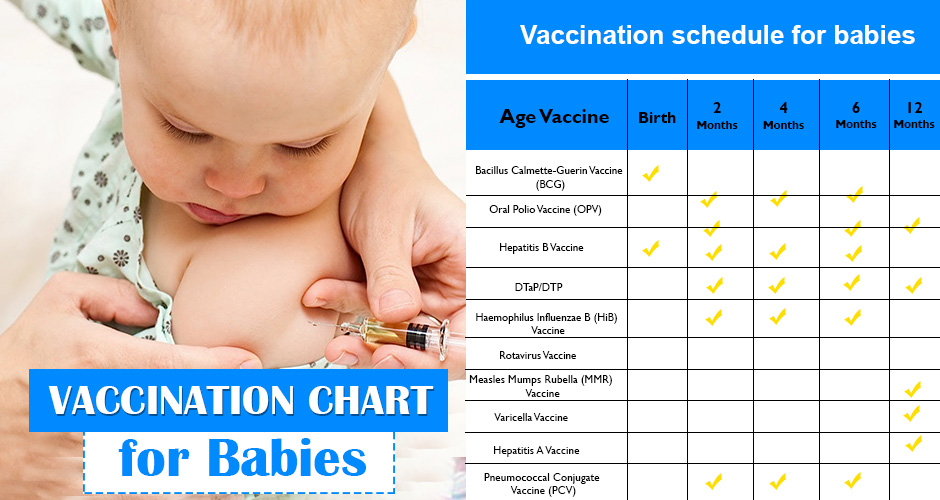
0-6 months
Article
Feeding a nursing mother
Most of the nutrients your baby gets through breast milk comes from your body's stores. Therefore, do not forget that the menu of a nursing mother plays an important role!
0-6 months
Article
Proper nutrition is the basis of future health
During the first 1000 days of a baby's life, optimal nutrition largely determines the growth and development of the child in the present and future. A balanced diet, which contains the most important macro and micronutrients, is an important investment in a child's future health.
0-6 months
Article
Major food allergens
An allergic reaction in a child, just like in an adult, occurs when the body mistakenly perceives a substance as harmful, in other words, it is a defensive reaction to an invasion that actually did not occur.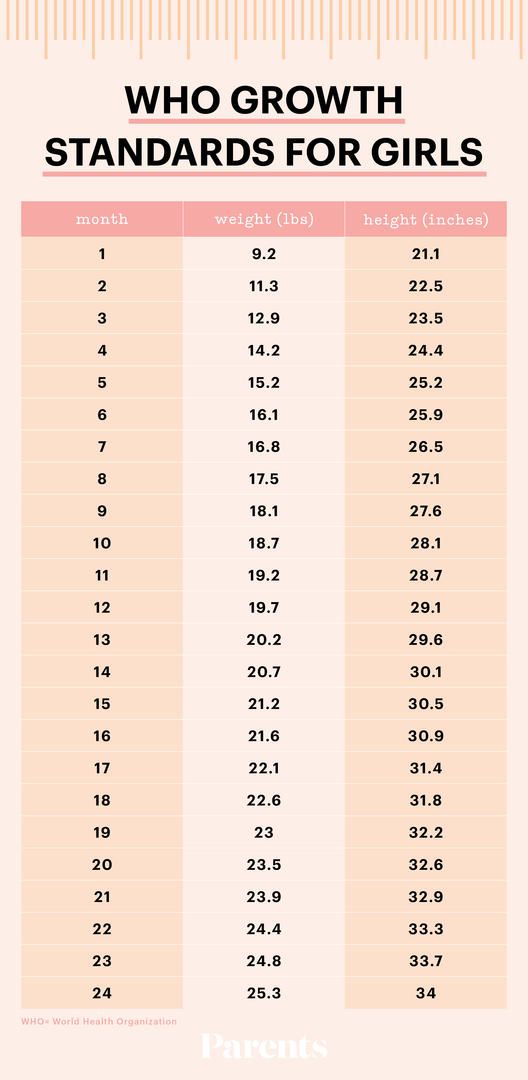
0-6 months
Article
Basic principles of breastfeeding
0 reviews
Are you planning to breastfeed your baby but don't know what it takes? Here is a list of breastfeeding tips to help you get ready.
0-6 months
Article
How can a new mother cope with feelings of loneliness?
0 reviews
Even with the abundance of online parenting forums, new moms often feel lonely. Here is a list of activities for parents and children, from organizing games together to children's yoga, that will help you feel less isolated.
0-6 months
Article
Vomiting in a child: what to do to help the baby
0 reviews
What can cause a child to vomit and how to provide first aid before the doctor arrives.
0-6 months
Article
Physical development of the child by months
All parents are worried about whether their baby is developing normally, whether he is gaining enough weight and whether the growth of the baby is normal, whether he is acquiring all the skills appropriate for an early age.
0-6 months
Article
Menu for breastfeeding: what can a nursing mother eat?
0 reviews
If you are breastfeeding, it is important to eat a healthy diet because breastfeeding can affect your baby as much as you. We have collected information about what you can eat for a nursing mother, and what is not recommended to eat while breastfeeding.
0-6 months
Article
Immunization schedule in Ukraine: vaccination rules
During the first year of life, a number of vaccinations against various life-threatening diseases are recommended for a baby. In order to determine the order and time of vaccination, there is a special vaccination schedule recommended by the Ministry of Health of Ukraine.
In order to determine the order and time of vaccination, there is a special vaccination schedule recommended by the Ministry of Health of Ukraine.
0-6 months
Article
How to remove the stomach after childbirth: TOP 8 tips
0 reviews
Several proven methods to reduce the stomach after childbirth. Follow simple recommendations, and soon you will return to your figure, which was before pregnancy.
0-6 months
Article
How to care for the navel of a newborn?
0 reviews
The baby's umbilical cord is the link between the baby and mother throughout life inside the mother's womb.
0-6 months
Article
How to be a good parent
0 reviews
Becoming a parent for the first time and bringing a newborn home is the most exciting moment. Along with all the joy and love you experience, it's perfectly normal to feel unprepared and overwhelmed. If you're worried about becoming a mom or dad soon, we've put together some tips on how to be a good parent.
Along with all the joy and love you experience, it's perfectly normal to feel unprepared and overwhelmed. If you're worried about becoming a mom or dad soon, we've put together some tips on how to be a good parent.
0-6 months
Article
How to teach a child to roll over from his stomach to his back?
0 reviews
In the first year of life, the baby grows and develops very quickly. Parents rejoice at each new success of the crumbs. Here he is already holding his head, and now he is turning over from his back to his side. But sometimes the baby does not get coups from the back to the stomach and vice versa. In this case, mom and dad can help him. How to teach a child to roll over from his stomach to his back and vice versa?
0-6 months
Article
First walk with a newborn: useful tips
0 reviews
Preparing for a child's first walk can be difficult.